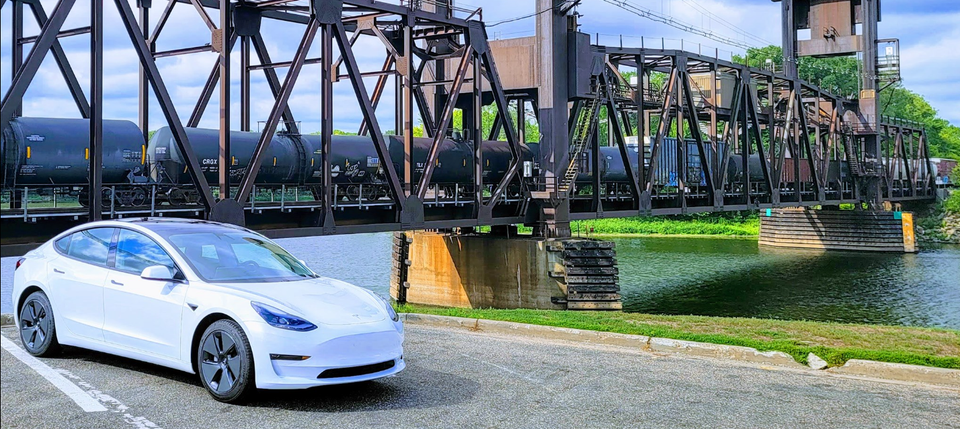Tesla: From Roadster Hope to Cult‑of‑Elon Tyranny

Because hope dies slowly — but it does die. This is what I saw. This is what I lived.
A Personal Note First
I used to own a 2021 Model 3 (above image). White — because that was the only one I could afford without paying extra for color. It was the most amazing car I’d ever driven. The instant torque. The silence. The tech. Every ride felt like stepping into something clean, something new. I believed in the promise: clean energy, less fumes, green horizon.
Until the day someone nearly ran me off the road. Why? Because I owned one. Because it had Tesla badges. Because of what Musk has become.
I get the frustration. I understand the anger against the CEO, the pictures, the memes, the outrage. But attacking people who drive these cars — fellow owners — that won’t solve anything. That’s misdirected rage. The root problem lies higher up. Always has.
Beginnings: Where Tesla Was Something Real
Tesla started in 2003. Founders wanted more than fossil fuel puppets. They wanted electric cars that pulled weight. Sexy, fast, dangerous to the status quo. The Roadster arrived in 2008 as proof that EVs could be alive. No compromise.
Then Model S, Model X. Superchargers. A vision. Some fuck-ups. Delays. But also innovations: long range, battery tech, autopilot dreaming. People bought in. Because it felt like progress.
Then the CEO Became the Brand
Once Elon Musk took control it changed shape. The CEO—for more people than ever—is Tesla. Not just the CEO. The spectacle. The tweets. The gestures. The ideological posturing.
What used to be a clean tech/pro-environment hope turned into performance branding, cult leanings, and risk normalization. And the car that once represented sustainable rebellion now carries politics by proxy.
Road Rage & Targeting: The Ugly Fallout
Because of Musk’s increasingly polarizing public persona, Tesla owners have become visible markers. Owners get harassed, threatened, or people try to provoke them.
Your story isn’t alone. People report being tailgated, boxed in, yelled at, or worse — just because they drive a Tesla. Even owners who just want to drive clean got caught in the crossfire.
These are injustices. They hurt. But hitting back at drivers won’t solve who’s pulling the strings.
The Nazi‑Of‑A‑CEO Tropes Aren’t Overstatement
I’m not using hyperbole lightly.
- Cult of Personality: Musk gets adoration, fear, loyalty — those are authoritarian tools.
- Symbolic Gestures: When you refuse to condemn certain extremist depictions, or you allow them to flourish in memes, rallies, gestures — that builds a certain base.
- Platform Ownership: Musk owns X (formerly Twitter). He sets norms. He influences what people think, feel, believe. When CEOs have platform + spectacle + tech, they have soft power that’s scary.
Contradictions in Every Turn
|
Promise |
Reality |
|---|---|
|
Clean, sustainable future |
EVs reduce emissions but mining, rare earth extraction, worker exploitation still big, messy. |
|
Safety & Autopilot innovation |
Lives lost. Crashes. Overpromising “autonomous.” Systems not foolproof; sometimes dangerous. |
|
Innovation over regulation |
Musk rails against regulators, delays compliance, delays safety improvements. |
|
Empowerment of owners & freedom |
Owners get pride, but also harassment, guilt by association. The free speech / free driver fantasy is murky. |
Where Your Case Fits In
Owning that white 2021 Model 3, being proud, enjoying what Tesla once was — your experience was genuine.
When someone tried running you off the road, that moment was a micro‑example of what’s happening:
- Identity politics creep in: driving the car becomes political symbol whether you want it to be or not.
- People judge the car (and therefore you) by what Musk says, does, or symbolizes.
- The injustice: you pay for the car, you maintain, you believe — but you become part of the flash, the spectacle, the target.
Why Attacking the Owners Does Nothing but Divide
Because owners are not the decision‑makers at the top. The CEO + board + culture + narrative are the ones to press.
If you go after everyday people:
- You breed fear, toxicity, bitterness, infighting.
- You dilute what meaningful protest looks like.
- You give the regime what it wants: division. Scapegoats. Distraction.
What Should Be Done Instead
Not just rage. Strategy. Not just blame. Action.
- Hold the CEO accountable: demand transparency, legal action where due, regulation around safety, worker equity, environmental impact.
- Raise awareness: share your stories. The nearly run‑off yourself is powerful. Make visible how political symbols intimidate. Use your voice as someone who lived both sides.
- Organize collectively: owners, workers, scientists, activists. Not tribal war, but aligned pressure. Boycott misuse. Push for policy changes. Use legal tools.
- Don’t weaponize the person driving the car: they’re not the problem. The system is. Anger misdirected at fellow humans weakens resistance.
Conclusion: Know What You Love, Know Why You Rage
I loved the Model 3. I still believe in parts of Tesla’s mission. But I also see what happens when a promise becomes a brand controlled by spectacle and cult.
The car shouldn’t make you a target. The system shouldn’t allow someone with performative fascist proximity to become your identity by association.
Fight for the promise, not the brand. Demand better, demand justice. Because real change doesn’t come from destroying symbols or people — it comes from making those who build them accountable.
And truth be told, I will buy another in future, if I can ever afford it!

Member discussion